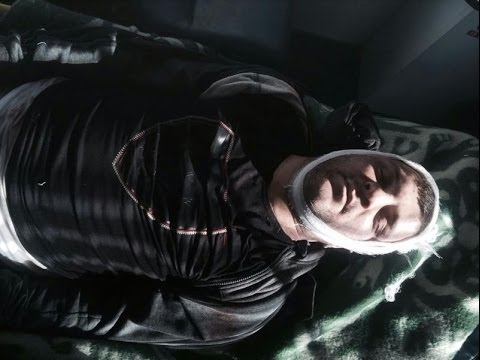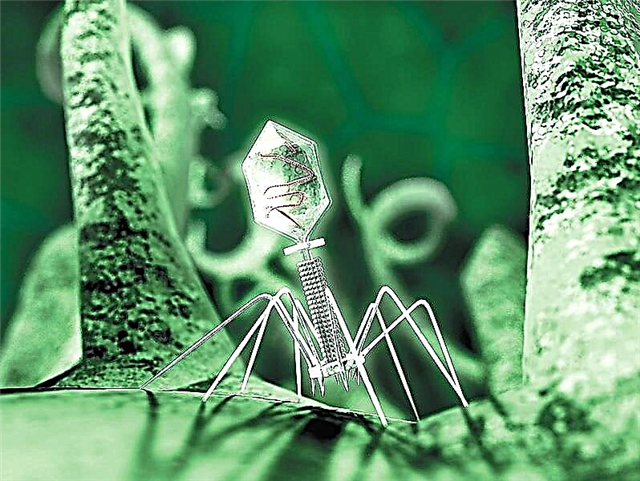Causes of VDD in children
Mechanism of development of DVP
The gallbladder stores bile, which is secreted in the liver, and releases it into the small intestine, where it performs its function of breaking down fats from food. From the gallbladder to the small intestine, bile passes through the bile duct. When the gallbladder is unable to release bile or it is unable to pass through the duct, it travels back to the gallbladder. Then the symptoms of the disorder develop.
When a person eats, the hormone cholecystokinin is released in the small intestine. It attaches to receptors distributed in the muscle of the gallbladder, which causes it to contract. Bile is released and passed into the intestines. With DWP, the gallbladder does not contract properly and bile does not come out.
At the end of the duct is a round muscle called the sphincter of Oddi. The hormone cholecystokinin also binds to the sphincter receptors and signals it to relax. Then the bile passes into the intestines. When the function of the sphincter muscles is impaired, bile does not pass through the duct and remains in the gallbladder.

Exogenous causes
Main reason - violation of the coordination function of the peripheral nervous system and neurohumoral control due to an illiterate meal regime (long intervals between meals, violation of the frequency of meals, dry snacks, abuse of carbohydrate and fatty foods) and irrational organization of the daily regimen, etc.
Endogenous causes
In addition to external factors, there are internal causes leading to ineffective contraction of the gallbladder and relaxation of the sphincter.
- Gallbladder inflammation (cholecystitis) interferes with his ability to contract.
- Sometimes, due to abnormalities in the structure of the biliary tract, bile cannot flow correctly. Such pathologies are congenital, hereditary, or they can arise due to constant inflammation in the organ.
- Hypothyroidism (insufficient production of thyroid hormones). This condition increases the likelihood of stones in the bile duct. Thyroxine relaxes the sphincter, therefore, due to the lack of this hormone, less bile enters the intestines.
- Diseases of the gastrointestinal tract. Pathologies affect the functioning of the biliary tract. Typically, children with VAD have other accompanying intestinal symptoms (diarrhea, constipation, food hypersensitivity).

The main manifestations of DVP in children
The main feature is abdominal pain, sharp or dull, after eating and exertion with increased pain after exercise (running, jumping). The pain will most likely be concentrated in the upper right abdomen and may extend to the side or back. Possible nausea, vomiting, bitter taste in the mouth, enlarged liver, pain during palpation, often there is an unpleasant odor from the oral cavity. Pain on palpation is observed in the right hypochondrium, in the epigastric region. Based on the symptoms of the disorder, it is not always possible to identify one type or another of the biliary tract disorders.
Types of DWP
Allocate hyperkinetic (hypermotor) and hypokinetic (hypomotor) kind of JVP.
Hypermotor form occurs much less frequently than hypomotor. The type is characterized by too frequent or strong compression of the gallbladder and incomplete relaxation of the sphincter. It is assumed that in this condition, the child has an excess of receptor regions for cholecystokinin in the gallbladder.
Symptoms hyperkinesia are similar to the common manifestations of DVP. However, there are two distinguishing characteristics: significant acute pain and the onset of heart pain. The degree of pain is due to a sharp increase in pressure in the gallbladder and hypertonicity of the sphincter. Tachycardia, loss of muscle strength, and weakness are possible.
DVP on hypotonic type the more common of the two forms. The gallbladder and ducts do not contract well enough to drain all the bile. Usually the pain is dull and prolonged, although it largely depends on the personality of the patient.

Methods for the diagnosis of veins
Laboratory diagnostics
In the general analysis of blood with DVP, all indicators are within normal limits. An increase in leukocytes and ESR will indicate the course of inflammatory processes in the body. Urine examination reveals a darker color of the sample, possibly the presence of bile pigments. In a biochemical blood test, a temporary significant increase in the level of liver enzymes and / or bilirubin may indicate dysfunction of the sphincter of Oddi.
Instrumental methods
Ultrasound procedure
At the first stage of the study, the specialist determines the size and shape of the gallbladder, the presence of constrictions, bends and stones. Further, the child is encouraged to eat fatty foods. An hour later, the study is again performed, but now the rate of release and the degree of compression of the gallbladder will be assessed.
Duodenal intubation
A probe is inserted into the duodenum to assess the motility of the biliary tract and a portion of bile is taken. The material is examined for signs of inflammation, stones, parasites.
Fibroesophagogastroduodenoscopy (FEGDS)
The study allows to exclude abnormalities in the upper gastrointestinal tract, when they are suspected as the cause of VDD.
Cholecystography
A radioactive chemical is given intravenously to the patient. The test chemical is removed from the blood by the liver and secreted into the bile. The test chemical is then dispersed wherever the bile enters: ducts, gallbladder, and intestines. A camera that senses radioactivity is placed over the child's abdominal cavity. This allows the technician to view the "image" of the liver, ducts, gallbladder and surrounding areas where the radioactive chemical was transferred to the bile-filled liver, ducts, and gallbladder. The hormone cholecystokinin is used to stimulate the contraction of the gallbladder. This study evaluates the rate of contraction of the organ, the functioning of the sphincter.

Dyskinesia treatment
Mode
Reflex influence is of great importance in the development of the disease, therefore, it is necessary to organize a rational daily regimen with special care, provide the child with sufficient time to sleep - at least 7 hours, and also limit physical activity. It is necessary to protect the child from physical overwork and stress.
Diet recommendations
The principle of fractional 5 - 6 meals a day is shown (table No. 5 according to M.I.Pevzner). Recommend low-fat types of poultry, fish, meat, cottage cheese and other dairy products; the protein quota should be 20% higher than the required one. Limit foods containing fats by 10-20%, excluding foods with animal fats. Foods of cold temperatures are not recommended for consumption, as this can lead to spasm of the sphincter.
| JVP form | Recommended | Limited | Excluded |
| Hypokinetic | Products that stimulate the secretion of bile: vegetables, fruits, vegetable oils, eggs. | Foods containing fats, cold, sphincter spasms. | Fried, pickled, smoked products, mushrooms, cocoa, coffee, highly rich broths, drinks with gas. |
| Hyperkinetic | Low-fat species, poultry, fish, meat, cottage cheese, etc. Increase the protein quota by 10 - 20% as required. | Products that stimulate bile secretion: fatty poultry, fish, meat, vegetable oil, eggs. |
Basic pharmaceuticals

For hypermotor type it is recommended sedative neurotropic medications (valerian, bromine, Persen, Adaptol).
Antispasmodic drugs to relieve pain, they are used depending on the patient's age: Papaverine - from six months, Drotaverin - from 6 years old, Mebeverin - from 12 years old, Pinaveria bromide - from 18 years old. Choleretic drugs (choleretics), which have a cholespasmal effect, are prescribed 2 weeks a month for six months: Odeston, Olimetin, Flamin, Hofitol, etc.
In case of hypomotor AVP, neurotropic drugs with a stimulating effect: aloe extract, ginseng tincture, Pantocrinum. Cholekinetics (stimulating the motility of the biliary tract) are shown: magnesium sulfate, Xylitol, Sorbitol, Hofitol, Ursosan, Odeston, Galstena, etc.
Enzymes prescribed when detecting relative pancreatic insufficiency.
If there is a spasm of the sphincter, choleretic drugs are categorically contraindicated, therapy includes Drotaverin, Papaverine - drugs that reduce the tone of the gallbladder. With dysfunction of the sphincter of Oddi - Domperidone (stimulant of gastrointestinal motility).
Complications of DVP
Without timely treatment, the disease will progress, the general condition of the patient will deteriorate, and serious complications may develop:
- chronic cholecystitis and cholangitis (inflammation of the ducts);
- gastritis;
- cholelithiasis;
- chronic pancreatitis;
- duodenitis;
- dystrophy.
Forecast
In general, the prognosis for VAD is favorable; if dyskinesia is caused by another disease, then the prognosis will depend on the underlying disorder.
Prevention
You need a diet in accordance with age, tonic physiotherapy, drinking balneotherapy (mineral water therapy), herbs, physiotherapy, vitamin therapy.
Anti-relapse therapy
| Hypermotor form | Hypomotor form |
| Mineral water | |
| Low mineralization: Slavyanskaya, Smirnovskaya, Azni, Essentuki No. 4 and 20, Narzan, Varzi-Yatchi - 3 ml per 1 kg of body weight per day, heated to 40 ° C 15 - 30 minutes before meals, 5 - 6 times a day , course 1 - 1.5 months 2 times a year. | Strong mineralization: Arzni, Essentuki No. 17, Morshanskaya, Batalinskaya, Uvinskaya and others - 18 - 20 0С 15 - 20 minutes before meals 3 times a day, the course is 3 - 4 weeks, 2 times a year. |
| Phytotherapy | |
| Mushroom mire, smoke herb, medicinal dandelion, celandine, sage, mint, dill seed, etc. | Corn stigma, immortelle flowers, chamomile, nettle leaves, cornflower, rose hips, St. John's wort, oregano, yarrow. |
Conclusion
DWP is most common in preschool children. The basis of treatment is made up of non-drug methods, including psychotherapeutic correction, normalization of the daily regimen and nutrition, rational physical activity.



